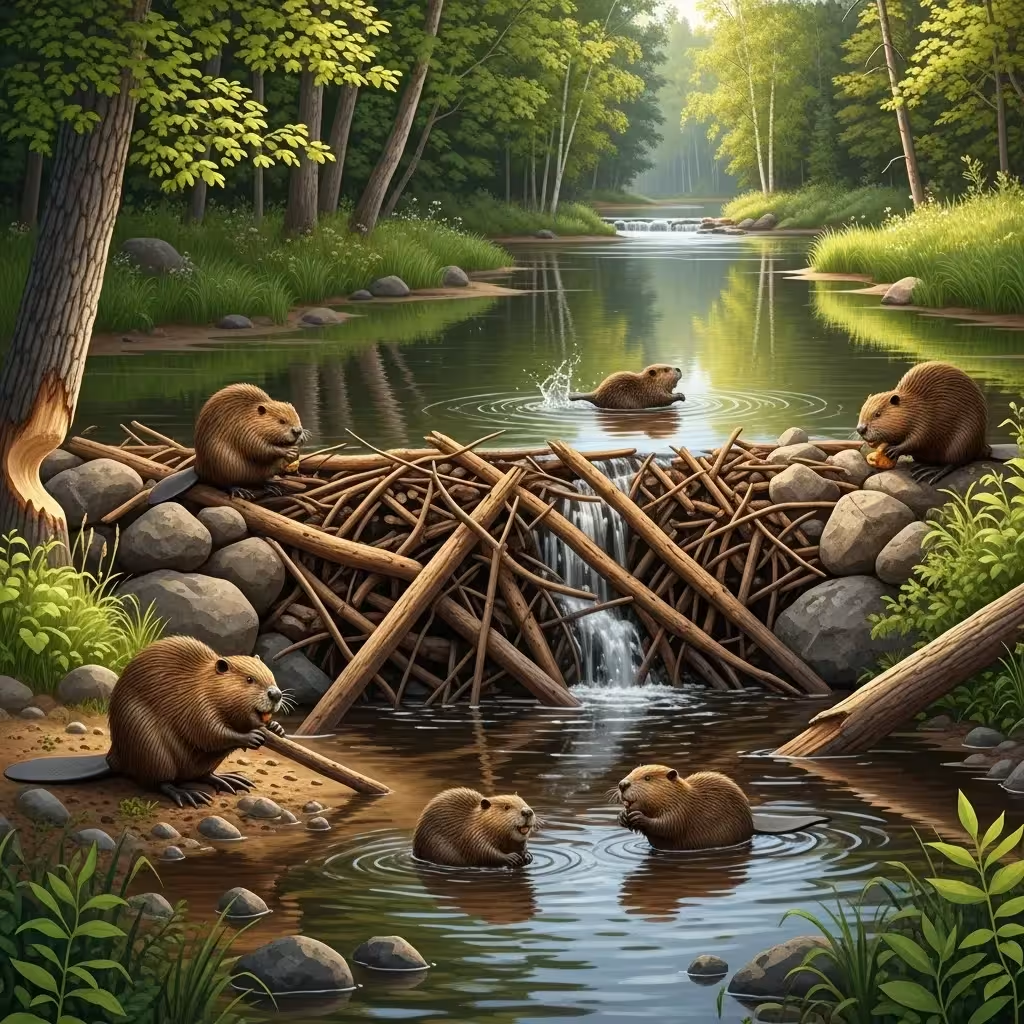
The Blueprint for a Dam: How Do Beavers Build Dams?
The construction of a beaver dam is one of the most remarkable examples of animal architecture in the world. It is not a random pile of sticks, but a sophisticated, dynamic structure engineered to serve a very specific purpose. The question of how do beavers build dams reveals a fascinating blend of instinct, learning, and constant adaptation to their environment.
The Purpose of the Dam: Creating a Safe Haven
First, it is crucial to understand why they build. Beavers do not build dams for fun or simply to stop water. The primary purpose of a beaver dam is to create a deep, stable pond. This artificial pond provides a critical defense against their main predators, such as wolves, coyotes, and bears. The deep water surrounds their lodge, and the lodge entrances are built underwater. This aquatic fortress makes it nearly impossible for a land-based predator to gain entry.
The pond also serves as a refrigerator. In the fall, beavers create a “food cache” by cutting down numerous branches and sinking them in the mud near their lodge. During the winter, when the pond freezes over, they can swim out from their lodge under the ice, retrieve a branch, and bring it back inside to eat. Without the deep water created by the dam, the pond could freeze to the bottom, cutting off their access to food.
Step 1: Laying the Foundation
Construction begins with the foundation. Beavers are innately sensitive to the sound and feel of running water. This stimulus is believed to be a primary trigger for building behavior. They start by felling trees and cutting large branches, often several inches in diameter. They drag or float these primary logs to a narrow point in the stream and orient them parallel to the water flow, forcing them into the stream bed to act as anchors.
They will continue to pile large, heavy materials—logs, large rocks, and clumps of mud—to form a base. This initial phase is about brute force, creating a barrier that begins to slow the current and raise the water level slightly. The goal is to establish a solid footing that can withstand the pressure of the flowing stream.
Step 2: Weaving the Structure
Once the foundation is secure, the beavers begin the more intricate work of building the dam upwards and outwards. They bring smaller branches, sticks, and even discarded corn stalks or other vegetation to the site. Using their nimble front paws and powerful jaws, they weave this material into the foundation. They push sticks into the mud and wedge them between existing logs, creating a complex, interlocking lattice.
The structure is not built straight up like a brick wall. Beavers instinctively build their dams with a gentle curve or bow facing upstream. This shape is structurally sound, similar to an arch dam in human engineering, helping to distribute the immense pressure of the water across the entire structure.
Step 3: The Final Seal
A woven web of sticks alone is not enough to hold back water effectively. The final and most critical step is waterproofing. Beavers dive to the bottom of the pond on the upstream side of the dam, scoop up mouthfuls of mud, gravel, and wet vegetation, and carry it to the dam. Holding the material with their front paws against their chest, they swim to the dam face and push the mixture into the gaps and crevices of the stick-work.
This plastering process, sometimes called “chinking,” makes the dam remarkably watertight. The downstream side is typically left as a porous tangle of sticks, while the upstream side becomes a smooth, sealed wall of mud and debris. The water pressure itself helps to compact this material, strengthening the seal over time.
Constant Maintenance: A Never-Ending Project
A beaver’s work is never done. This complex animal behavior includes daily or nightly patrols of their dam. They swim along the structure, listening and feeling for leaks. The sound of trickling water triggers an immediate repair response. They will continually add new sticks and plaster more mud to patch any weak spots. This constant maintenance is essential for the dam’s longevity and its ability to maintain the stable pond environment the beaver family depends on for survival.















